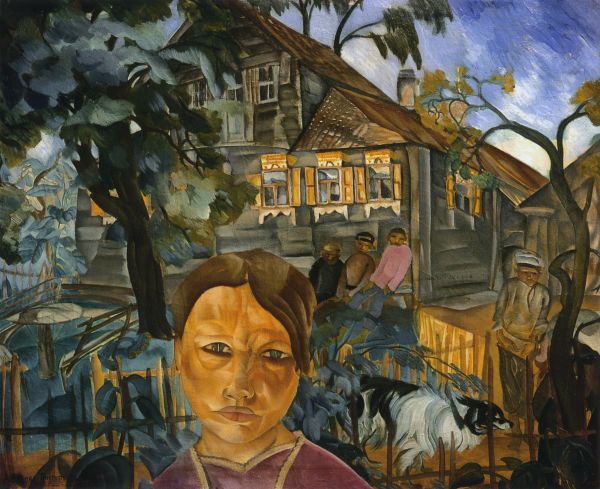|
|
Countryside. 1918

Grigoriev Boris,
Oil on canvas
80,5 x 97,5
Пост. в 1918 г. от автора
Annotation
Created in the wake of the revolutionary events, Boris Grigoriev’s Raseya cycle (1917–22) brought the artist fame and helped to define his creative credo. Raseya was perceived as a profound and expressive image of Russia in 1917 — hungry and exhausted by labour and war. The mistrustful glances of the rustic heroes of Countryside reflect the inner tension and psychologism. Grigoriev’s combination of Neoclassicism with elements of Expressionism, restrained colour nuances and simplified and grotesque forms turn the simple-hearted men, women and children of Raseya into the heroes of a dramatic era. Contemporaries highly rated Grigoriev’s painting, believing that for future generations “this work will speak volumes more than any chronicle or book, painting a profound picture of the history of the dictatorship of workers and peasants.” The artist completed the cycle in emigration.
Author's Biography
Grigoriev Boris
Grigoriev, Boris Dmitriyevich
1886, Moscow - 1939, Cannessur-Mere (France)
Painter, draughtsman. Studied under Dmitry Scherbinovsky at the Stroganov Central School of Art and Industry (1903-07) and under Alexander Kiselev and Nikolai Dubovskoi at the Imperial Academy of Arts (1907-12). Contributed to the exhibitions of the Impressionists (1909), Fellowship of Independents (1912-13) and the World of Art (1913, 1915-18, member from 1918). Emigrated (1919) and lived in Finland, Germany and France.

